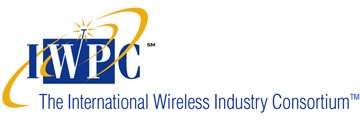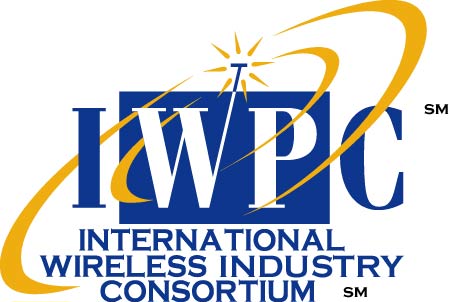Optimizing Mobile Device RF
Performance Beyond LTE-Advanced
Addressing Future RF Challenges of CA, MIMO,
Multiband Support in an FD/TD LTE World
Hosted by:

When
May 11-13, 2015
Introduction
Service providers are seeking to deliver a better customer experience and utilize additional spectrum bands as they become available. Many advanced features such as Carrier Aggregation and MIMO are being implemented at the terminal posing considerable challenges to the smartphone and cellular user equipment ecosystem and could also compromise final customer experience. This workshop will bring together leading operators and technology innovators to explore state-of-the-art RF Front End enablers and consider technology breakthroughs and new architectural approaches for the different elements of device design.
Workshop Goals
- Assess current architectural limitations with regards to long term evolution of CA and MIMO and explore potential for RF Front-End (RFFE) innovation
- Understand the performance impact of how current RF design can scale up with number of bands added, especially considering more than 5 Component Carriers
- Investigate and understand trends and innovative RF designs that will scale up efficiently with the number of supported bands and their aggregation
- Examine MIMO limitations, enablers and innovation within the terminal (UE)
- Understand opportunities for active antennas & antenna tuning (AAS) within the terminal (UE)
Agenda
|
DAY 1 Monday 19:00 |
Evening Reception |
Hotel |
|||||||||
|
DAY 2 Tuesday 08:00 |
Opening Remarks |
|
|||||||||
|
09:00
|
Host Keynote Remarks
|
In Search of Optimized Next Generation User Equipment Principal Standards Strategist
|
|||||||||
|
10:00 |
Networking Break |
||||||||||
|
10:40
|
Carrier Perspectives
|
Challenges for Next Generation Devices Project Manager
European Operator Perspective Mobile Radio Access Technology Specialist
Asian Operator Perspective Associate GM
|
|||||||||
|
12:40 |
Networking Lunch |
||||||||||
|
13:40 |
Carrier Perspectives (Continued)
|
Higher Order MIMO and Increased UL Tx Power Director, Mobile Systems and Devices Strategy & Architecture
|
|||||||||
|
14:30 |
Platform Perspectives
|
RF Systems End to End Head of RF Front Systems
|
|||||||||
|
15:10 |
Networking Break |
||||||||||
|
15:40
|
Platform Perspectives (continued)
|
LTE-A UE Design Challenges Head of RF Front Systems
Evolution of the RF Front-End for LTE-A Principle Engineer
|
|||||||||
|
17:00
|
End of Day Panel |
Invited
|
|||||||||
18:00 |
Adjourn |
||||||||||
20:00 |
Networking Dinner |
La Posada De La Villa Bus transportation provided to restaurant |
|||||||||
|
DAY 3 Wednesday 08:00 |
RF Front End Trends & Innovation
|
Improving Cell Edge Performance with Novel Tx Path Enhancements
Improving LTE Receiver Sensitivity to Double Downlink Data Rates Director, Systems Engineering
Super-PADs: Integrated Components for Today's (and Tomorrow's) Smartphones Strategic Marketing Manager
|
|||||||||
|
09:30
|
RF Front End Trends & Innovation (Antennas and Systems)
|
Extending Band Support to New Lower and Higher Frequencies Research Manager
Agility for the Next Generation of Mobile Devices CTO
|
|||||||||
|
10:30 |
Networking Break |
||||||||||
|
11:00 |
RF Front End Trends & Innovation (continued)
|
Tuning as a Tool for RF Designers Product Marketing Manager
Tunable RF Front Ends for Advanced 4G Handsets Product Manager
Tunable SAW Filters for Mobile Devices CTO
Future Building Blocks for Reconfigurable Front-end Modules and Transceivers Wireless Researcher
|
|||||||||
|
13:00 |
Networking Lunch |
||||||||||
|
14:00 |
RF Front End Trends & Innovation (continued) |
A Widely Tunable Full Duplex Transceiver Combining Electrical Balance Isolation and Analogue Cancelation Wireless Technology Innovator
What is a Fully Digital Transmitter? Senior Engineer
|
|||||||||
|
15:00 |
Networking Break |
||||||||||
|
15:30
|
Tuning Working Group Session
|
Working Group Leadership
|
|||||||||
|
16:00
|
RF Front End Trends & Innovation (continued)
|
Engineering Substrate: the Foundation to Meet Current and Future RF Requirements Director, Business Development
|
|||||||||
|
16:30 |
RF Testing Trends & Innovation
|
VoLTE Testing Aspects & Experiences Market Segment Leader
Supporting Complex Matching Circuits through Full Wave Circuit Optimization Product Manager
Development and Production Test Solution for Devices with Active Antennas Director, Product Management
|
|||||||||
|
18:00 |
Closing Panel |
Host & Attendees |
|||||||||
|
18:45 |
Adjourn |
||||||||||
|
20:00
|
Dinner (Dutch*) |
For those who desire to join us, we get together to enjoy good friends, good food and good wine. |
FAQs
- What is the deadline for presentation/handout materials?
- What can I do to prepare for speaking an at IWPC workshop?
- Who are the attendees?
- What are the costs/registrations fees?
- Hotel information?
- What are the travel options from the airport to the hotel?
- Are there any audiovisual requirements?
- Will business cards be collected?
- What is the dress code?
- How will handout materials be provided?
- What is the deadline for
presentation/handout materials?
Deadline for electronic version of presentation/handout materials: Friday, May 1, 2015.
- What can I do to prepare for speaking an at IWPC workshop?
Click on the link below for a short video guide regarding preparing for and improving your IWPC presentation:
- Who are the attendees?
- We do not permit the Press.
- We do not permit Analysts.
- We do not permit Consultants.
- We do not permit 3rd party sales reps.
- We only permit "first hand knowledge experts" in business and technology issues, prepared to contribute to the discussion.
- What are the costs/registrations fees?
ALL Hosts, Speakers, Panel Members and Attendees will be asked to cover out-of-pocket workshop costs such as conference room costs, food (Social Reception plus First Day breakfast/lunch/dinner plus Second Day breakfast/lunch plus Breaks), audio/visual costs, etc.
These costs will be $998 (USD) per person. (For IWPC Members only.)
ALL Hosts, Speakers, Panel Members and Attendees will be asked to pay this fee in advance with either Visa, MasterCard, American Express, cash, personal check or business check. Make checks payable to IWPC.
- Hotel information?
Hotel Melia Madrid Princesa
Calle de la Princesa
28008 Madrid, Spain
Phone: +34 91 541 82 00
Hotel WebsiteThe IWPC room block rate is 165 Euros. Click here to register online.
The cut-off date for reservations is April 20, 2015. After that date, rooms cannot be guaranteed at the IWPC rate.
- What are the travel options from the airport to the hotel?
Directions and transportation options will be posted as soon as possible.
- Are there any audiovisual requirements?
A Computer Projector will be available for the speakers.
In addition, we audiotape all presentations and the interactive discussions. Post workshop, presentations are made available to IWPC Members on the IWPC WEB site, along with “recordings” of all presentations and panel sessions.
- Will business cards be collected?
Business cards will be collected at the door from all attendees. We will make copies of these cards, which will be available to all who provided a business card.
- What is the dress code?
Business casual suggested. No ties, please!
- How will handout materials be provided?
For ALL IWPC members:
All IWPC members are invited to submit materials to be included in the online workshop folder in the IWPC Research Library. This should NOT BE SALES MATERIALS. Rather, we suggest it contain technical information about your technology as it relates to the workshop topics.
For all companies who will be making a presentation at the Workshop:
You are invited to submit an advance copy of your presentation, complete with graphics and illustrations.
These materials will be included on the IWPC website Research Library.
Please submit these materials either by email, as a Word for Windows file, Power Point files or PDF files.
Please use this FREE FTP site to send electronic materials (any size file):










